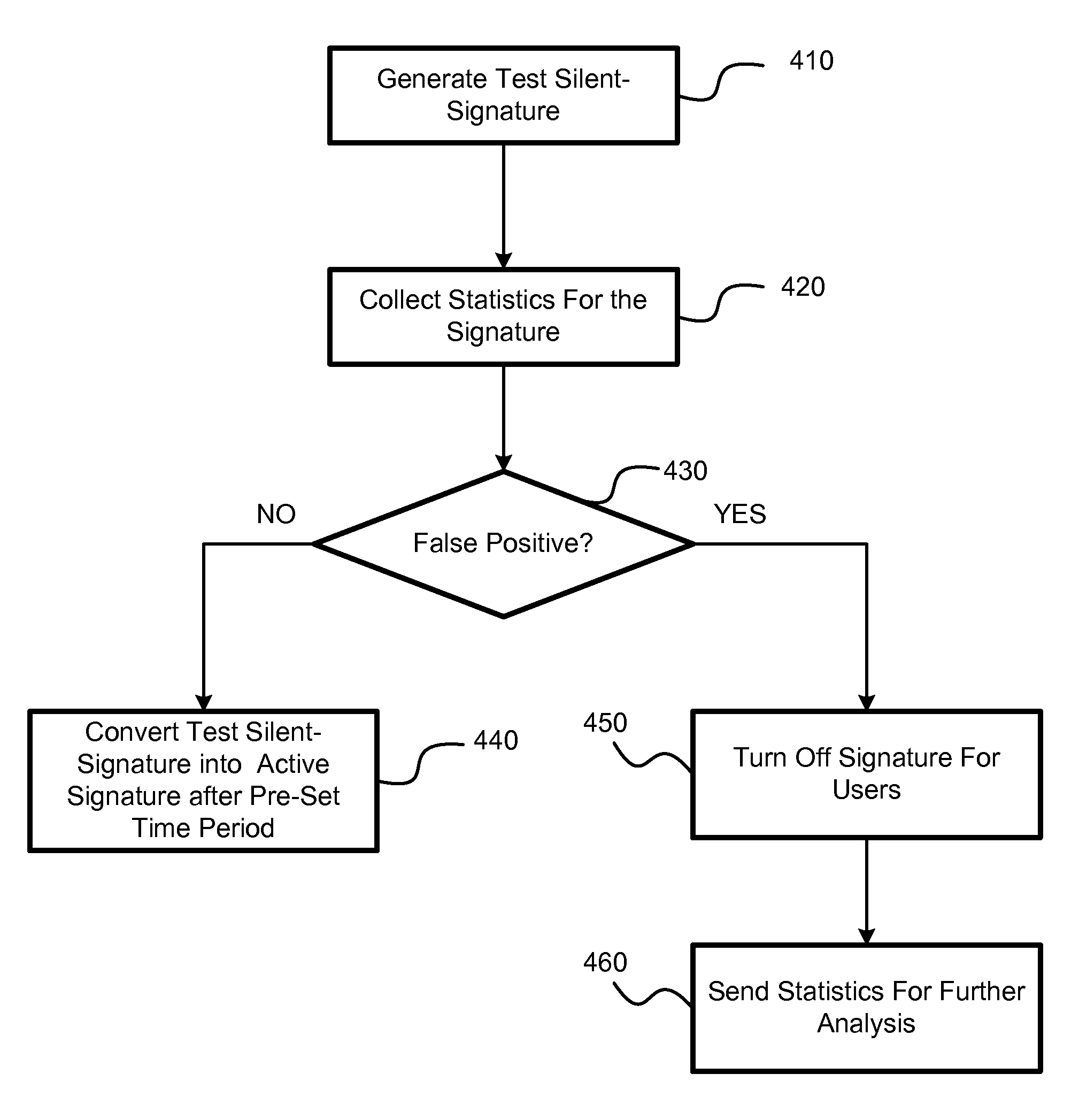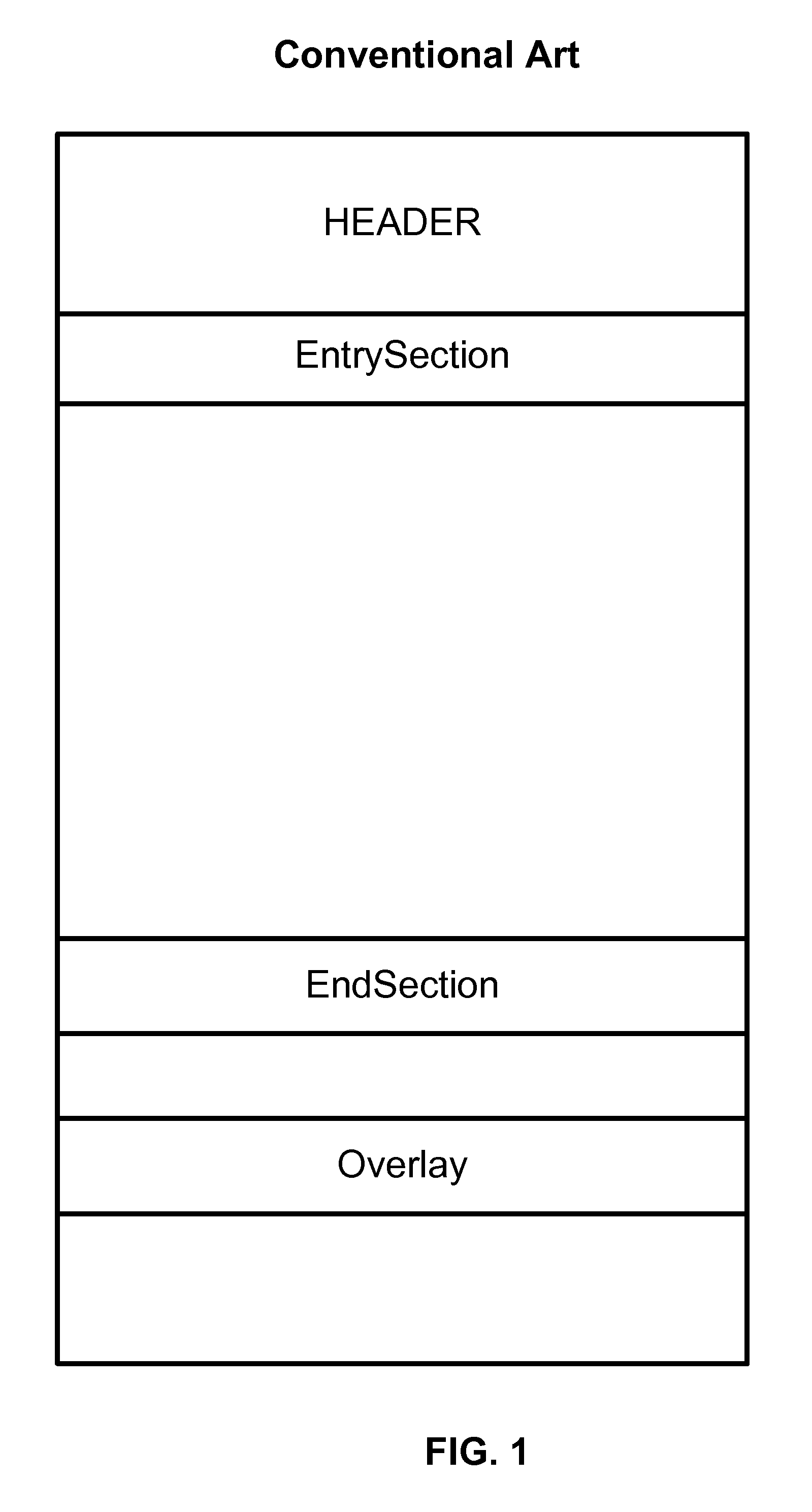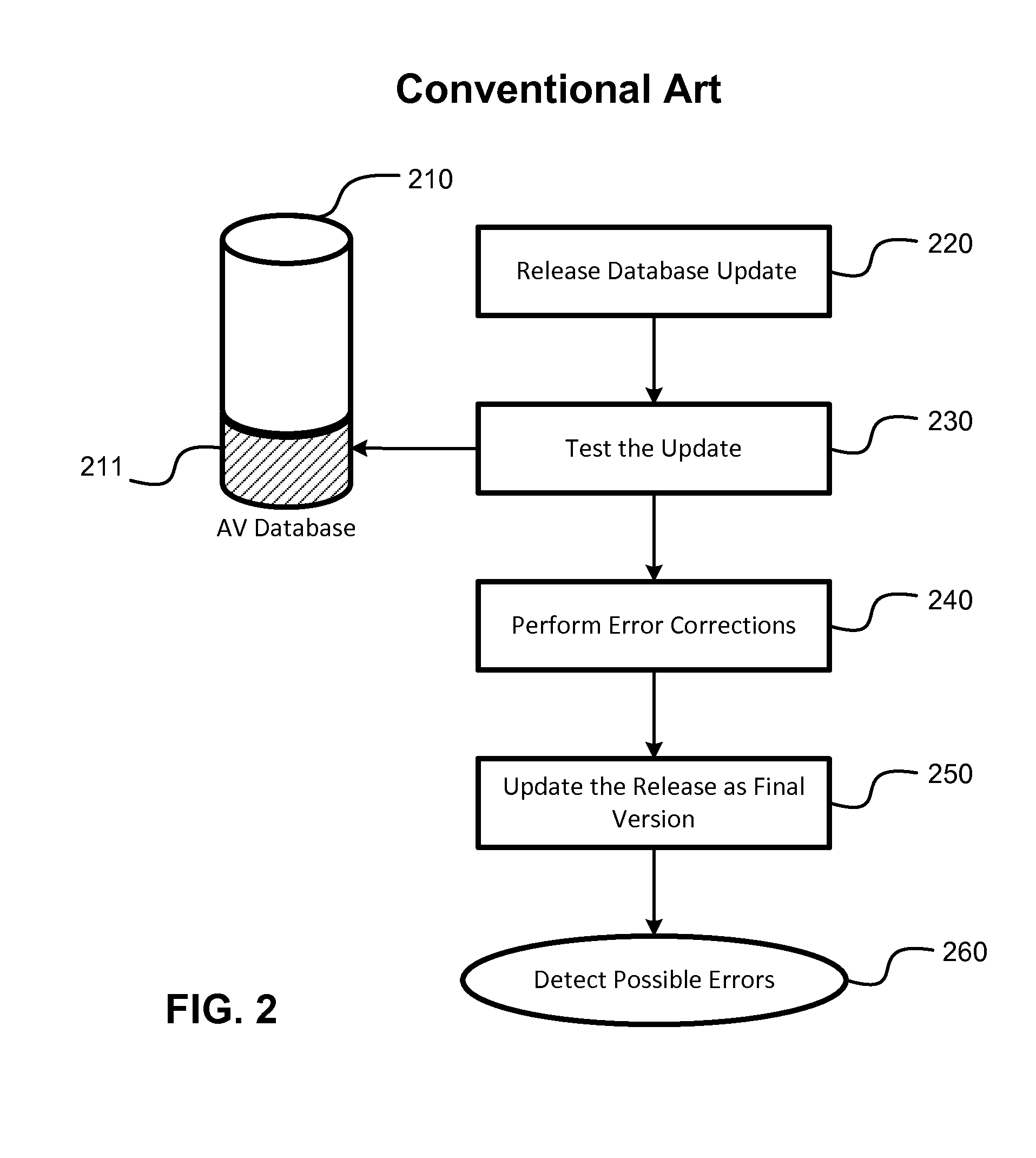Silent-mode signature testing in Anti-malware processing
- Summary
- Abstract
- Description
- Claims
- Application Information
AI Technical Summary
Benefits of technology
Problems solved by technology
Method used
Image
Examples
Embodiment Construction
[0036]Reference will now be made in detail to the preferred embodiments of the present invention, examples of which are illustrated in the accompanying drawings.
[0037]According to the exemplary embodiment, there is provided a method, system and computer program product for signature testing to be used in anti-malware applications. According to the exemplary embodiment, silent-signatures, after being tested, are not updated into a white or a black list, and are sent directly to users instead. The silent signatures are used differently from the regular signatures.
[0038]If the silent-signature coincides with a malware signature, a user is not informed. A checksum (e.g., hash value) of a suspected file is sent to a server, where statistics are kept and analyzed. Based on the collected statistics of silent-signature matches, the silent-signatures are either valid or invalid. Note that any other hashing algorithm, such as MD4, SHA1, SHA2, SHA256, etc. can be used for generating the signat...
PUM
 Login to View More
Login to View More Abstract
Description
Claims
Application Information
 Login to View More
Login to View More - R&D
- Intellectual Property
- Life Sciences
- Materials
- Tech Scout
- Unparalleled Data Quality
- Higher Quality Content
- 60% Fewer Hallucinations
Browse by: Latest US Patents, China's latest patents, Technical Efficacy Thesaurus, Application Domain, Technology Topic, Popular Technical Reports.
© 2025 PatSnap. All rights reserved.Legal|Privacy policy|Modern Slavery Act Transparency Statement|Sitemap|About US| Contact US: help@patsnap.com



